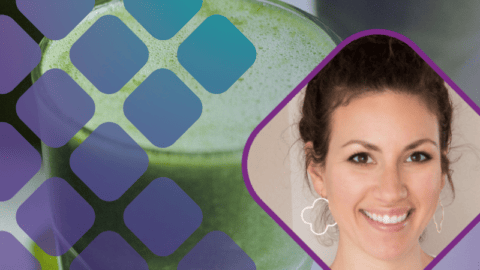Mosaic EDGE (formerly GPL Academy) has been educating practitioners for over 15 years on how to help patients heal through cutting-edge testing, research and protocols. In our recent 3-Day Master Practitioner Workshop, speakers shared detailed information on how the MycoTOX Profile, IgG Food MAP and Glyphosate Test can work for you. As well as gave additional information about markers in the OAT and GPL-TOX.
The following Q+A is a response to remaining questions Dr. Shaw was unable to answer during his presentations.
The material contained within this article is not intended to replace the services and/or medical advice of a licensed healthcare practitioner, nor is it meant to encourage diagnosis and treatment of disease. It is for educational purposes only. Any application of suggestions set forth in the following portions of this article is at the reader’s discretion and sole risk. Implementation or experimentation with any supplements, herbs, dietary changes, medications, and/or lifestyle changes, etc., is done so at your sole risk and responsibility.
Q: Could you explain a little bit about the process of testing the environment and mold removal techniques from home/car for patient tested positive?
A: Clients can choose from about 3 different choices of home testing. The ERMI, mold air sampling plates, and a home inspector are the most common options. Here is a resource for more info on all of these options.
Q: If the OAT is not to be used in place of the MycoTOX Profile, and a client cannot follow up with a MycoTOX Profile after findings of mold in the OAT, should one address it in some way? I am guessing it is wise to do so.
A: If mold is showing up on the Organic Acids Test and the client cannot test the MycoTOX Profile further investigation of the home/workplace/car/school should take place. This will help you as a practitioner know if they are currently exposed to mold. This will guide your treatment in whether or not to address the fungus with antifungals right away or post remediation/removal of exposure source. Retesting should include at lest a MOAT/OAT and MycoTOX.
Q: Does eating mushrooms or using medicinal mushrooms contribute to mycotoxins in your body?
A: If the mushrooms are contaminated with mold, then they can contribute to mycotoxin exposure. Also, they would most likely need to be ingested at extremely high levels to cause substantial mycotoxin increases. It would be best to investigate a WDB exposure prior to saying it is just the medicinal mushrooms.
Q: If someone is doing a mold protocol and is getting inflammation in the joints how can you support these toxins from excreting properly do you support more of lymph?
A: Lymphatic support is beneficial. Also consider increasing the binder dose if the client’s bowels can handle it. Consider reducing detox support during flares. This may be an aggravation reaction of detoxing too quickly. Supporting oxalate reduction and increasing anti-inflammatory support will also reduce joint pain.
Q: If a patient has a furan-2,5 dicarboxylic value above the average (15), would you treat him with antifungals?
A: This is not a positive result and should be confirmed with a positive MycoTOX Profile. If after consistent detox there is a plateau of progress, antifungals can support healing. I am finding most often people must do antifungal therapy for full resolution in most cases.
Q: How do you gauge whether the oxalate level on the organic acids can be from food? Is there a range that dietary oxalates can fall into?
A: There is not a specific range for any one person. It would be dependent on oxalate food intake you may see from a diet diary or diet history during your intake. Also if fungal markers are elevated on the OAT then its more than likely from that unless they eat a high amount of oxalate rich foods.
Q: Any hypothesized connection between autism, vaccines and mold?
A: Mold and mycotoxins have been implicated in autistic children. There may be a possibility of potential immune alteration of mycotoxins potentially causing adverse effects after vaccination administration.
Q: How do you manage a patient with autism who has a severe herxheimer reaction during treatment with itraconazole? do you keep the same dose?
A: This is up to the you and client. If they aggravate where they cannot function you can give them permission to reduce or skip a dose until symptoms subside. You may find that some clients that herx give up due to being uncomfortable and not feeling they have any control over their treatment if it gets to be too much. Giving an option to reduce can increase compliance. Also consider increasing the binder dose if their bowels can handle it.
Q: A patient has low Pyroglutamic and Oxalic, but high Glycolic, Glyceric and N Acetylaspartic – what significance of that?
A: These values don’t directly have anything to do with each other at the levels described but, low pyroglutamic acid means glutathione is being made sufficiently. Low oxalic and elevate glycolic and glyceric may be from fungal overgrowth, collagen, or bone broth intake, genetic hyperoxaluria (rare), B6 deficiency. Elevated N-acetylaspartic is associated with Carnavan’s disease (rare) if severely elevated. If mildly elevated this is more than likely due to increased nutrient need and/or gut dysbiosis.
Q: How would one test well water for mold? and wouldn’t you be able to smell or taste it?
A: Mold testing plates could be used. Just add you water to the plate and see if mold grows. Could have it analyzed by Immunolytics potentially.
Q: What botanicals work against aspergillus?
A: Many antifungal botanicals work against molds like oregano and garlic. Please see 5 Herbal Agents for Antifungal Therapy for more information.
Q: To clarify, Dr. Shaw believes that no glutathione should be used before mycotoxins testing because the toxins will bind to the glutathione and not be assessed correctly by the mass spec?
A: Correct. We are looking at the toxin unbound NOT bound to glutathione. It will be missed if its bound.
Q: Dr. Shaw disagrees with Shoemaker’s refusal to use anti-fungal drugs. Presumably, this not for all cases? Which molds typically require drugs to kill the organism? Only cases where repeat testing shows returning toxins despite removal of contaminants?
A: If the person is not colonized, then anti-fungal therapy is not needed. However, if continued detox of toxins and removal from exposure source still populates toxin on the MycoTOX Profile, then more than likely this person is going to need anti-fungal therapy. Also, any mold, if colonized, typically needs antifungals to kill them. Pharmaceuticals are beneficial in killing almost all species of mold. There is no one mold that absolutely NEEDs drugs to be killed. Mold is susceptible to natural agents.
Q: Is the mold on cheese toxic? How about if you trim it off and eat the rest? Are some cheeses more prone to toxic molds?
A: Mold on cheese is typically penicillium. In the case of blue cheese mycophenolic acid, a mycotoxin from penicillium, is the main ingredient that gives the cheese its blue color. So yes, mold on cheese can be toxic. If you are to remove the visibly molded spots you are more than likely reducing your exposure but there is no way to rule out microscopic mold growth and mycotoxins that are not visible. If you are not mold toxic then it should not harm you to eat this, but you may want to avoid molded foods to not add to the toxic load.
Q: Why do males have worse mycotoxin reactions than females?
A: I not sure this is a proven observation. There are many cases where men and women have the same exposure, and the woman has the worst reaction. All vice versa happens. It is more dependent on the individual and their susceptibility to the toxic effects of the mycotoxins.
Q: What is the glutathione challenge? and what were you trying to imply re it? To just not do before testing or you might not pick up the mycotoxins?
A: Glutathione challenge is giving the compound to provoke toxins prior to testing. GPL does not recommend doing this as the mas spec if not looking at the toxin bound to glutathione but unbound toxin. Bound toxin will be missed during sample testing.
Q: What over-the-counter antifungals were you referring to instead of the prescription ones?
A: Herbal and nutraceutical supplements. Check out www.nbnus.net for OTC anti-fungal options.
Q: Is there a marker in the OAT for actinomycetes?
A: No
Q: Just confirming the need to test liver enzymes twice a week? While on Sporonox.
A: Once a week is sufficient unless they increase and you want to assess sooner that that, then 2x that week would be warranted.
Q: And if mycotoxins are positive, how do you know which species of mold you have? or does it even matter to know? in other words, sporonox will treat them all?
A: You can evaluate which species of each genus excretes which mycotoxins to know which mold species you are directly dealing with or at least narrow it down. You could also do a sputum/nasal culture to determine which species is present. In the grand scheme of things, the specific species isn’t necessary to treat as Sporonox works on the ergosterol in the fungal cell wall to kill fungus in general.
Q: How likely are organic blue corn chips to be free of mycotoxins?
A: Not very likely. Corn is a commonly contaminated grain. Also, organic foods do not use pesticides so there is nothing there to kill the potential mold. In other words, organic food has an increased risk of being moldy due to the lack of fungicide use.
Q: What’s the research on seizure disorders and the testing?





